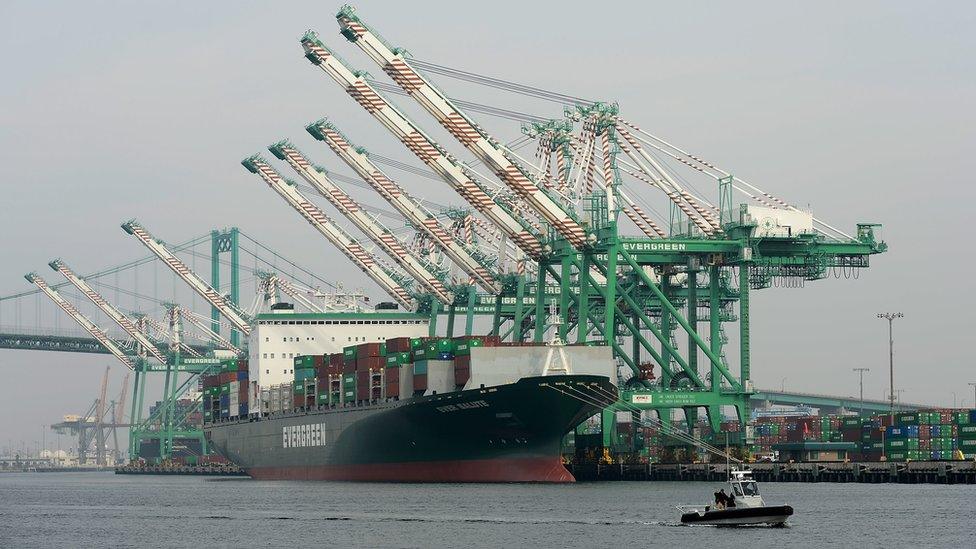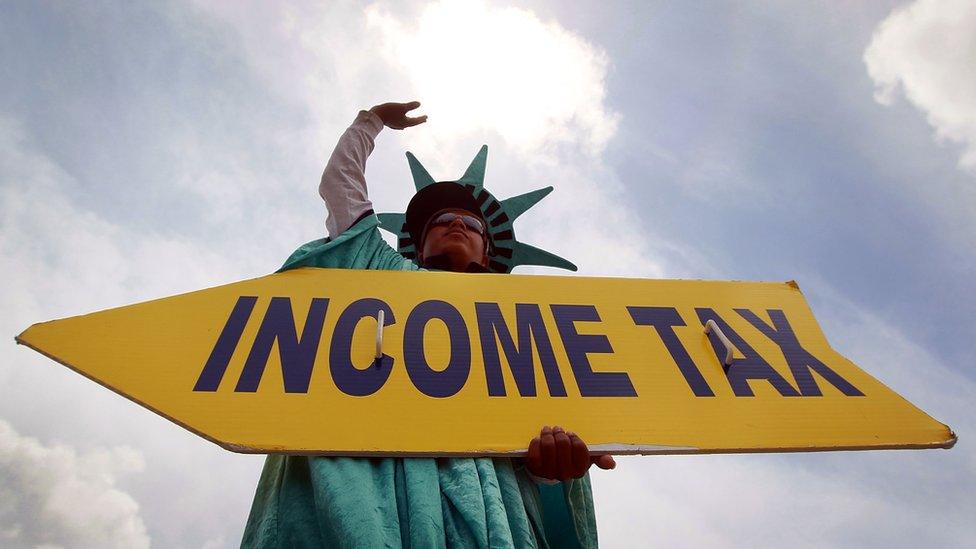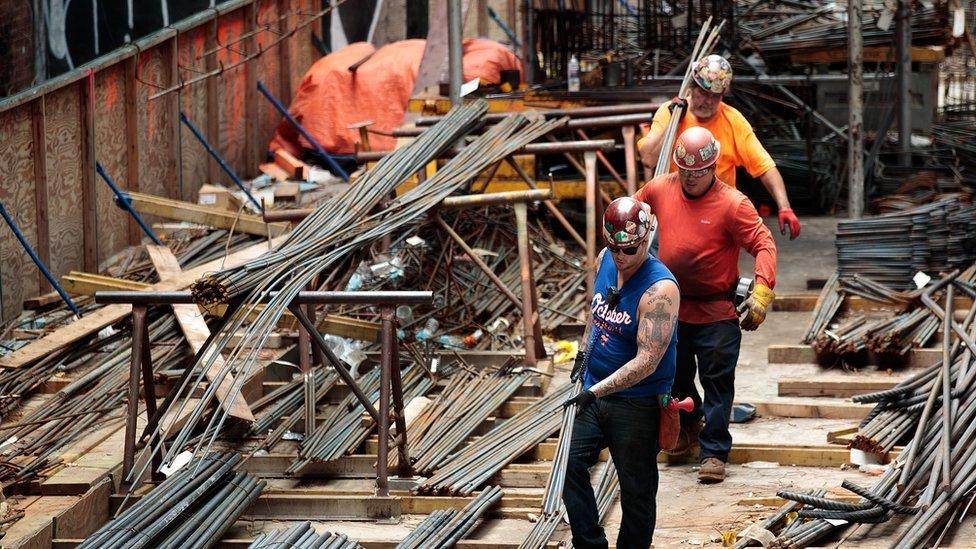Donald Trump's economic promises
- Published

As Donald Trump is set to become the next US president, here is a guide to what he has said about his economic policies.
Rethinking trade deals
Mr Trump has done his best to capitalise on the discontent around trade deals. He has suggested renegotiating trade deals using "negotiators whose goal will be to win for America".
Mr Trump has not spelt out what that "win" looks like, but he has promised to step away from deals like the existing North American Free Trade Agreement (Nafta) between the US, Canada and Mexico if a good rearrangement cannot be reached.

Mr Trump has accused China of keeping its currency undervalued
Mr Trump has also promised to get tough with countries that violate trade agreements, applying new tariffs and pursuing cases against them in the World Trade Organization. He has specifically accused China of being "the single greatest currency manipulator that's ever been on this planet".
However, one country he has reached out to is the UK. Mr Trump favoured Brexit and last month his trade adviser told the BBC the UK would be offered a free trade deal before the rest of the European Union if the Republican candidate won the election. Dan DiMicco said the UK would be at the front of the queue for any future trade deal once it has left the EU.
Tariffs
Mr Trump has called for a 35% tariff on Mexican imports and a 45% tariff on products from China.

Mr Trump could put tariffs in place on Mexican and Chinese imports
That would mean that a television made in Mexico that currently retails in the US for $100 would see its price rise to $135.
This could encourage US citizens to buy more products made in America, but it might result in Mexico retaliating by placing its own tariffs on US goods.
This would be bad news for many US companies because Mexico is the US's third largest export market, purchasing $267.2bn in American goods last year.
Cut taxes
Mr Trump favours cutting taxes for everyone, and reducing the number of federal income tax brackets from seven to three. He has said he would reduce the top rate of the tax from 39.6% to 33%. His proposed tax brackets are:
Earnings under $29,000: 0%
$29,000-$54,000: 12%
$54,000-$154,000: 25%
Over $154,000: 33%
Yet he has also proposed closing tax loopholes that typically favour the rich, and wants to see parents of young children get a deduction to cover the average cost of childcare.

Income tax - and whether it should be reduced - is a big political issue in the US
Regarding the estate or "death tax", Mr Trump has said he would eliminate it completely. The tax only applies when a family member passes on more than $5.45m (£4.39m) worth of assets to an individual, or $10.9m to a married couple.
In terms of the federal corporate tax, the main tax on businesses, he has said he will reduce it to 15% from the current rate of 35%, which is one of the highest in the world.
During the election campaign Mr Trump's team said the plan would cut the amount of income the government collected by $4.4 trillion over a decade. This is far below the $9.5tn calculated by the nonpartisan Tax Policy Center, external in August.
Mr Trump has also said he would prevent US companies moving their corporate headquarters abroad to avoid US taxes, and eliminate carried interest tax - a tax that mostly benefits hedge fund investors
He has not proposed significant reductions in spending on public pensions and public healthcare programmes like social security, Medicaid and Medicare. The funding needed for those is expected to balloon over the next decade, and its unclear where the money to pay for them will come from without tax increases.
An analysis performed by the Tax Foundation think tank last month found that while Mr Trump's plan would lower taxes for all Americans, it would lower them most for the highest earners.
Who's hiring?
Mr Trump has promised to put Americans back to work.
In his victory speech after Hillary Clinton had conceded defeat, he said: "We're gonna rebuild our infrastructure, which will become, by the way, second to none. And we're going to put millions of people to work as we rebuild it."

Mr Trump says he will increase infrastructure spending
His employment plan also focuses on encouraging more businesses to open in the US, and removing regulations to make it easier for companies to hire.
Throughout the election campaign Mr Trump focused mostly on increasing manufacturing jobs, which have declined by around five million since 2000. Much of that decline has been caused by improvements in technology, however, not outsourcing.
He has promised to create 25 million jobs over 10 years and to double economic growth to 4%, a rate which hasn't been seen since the Bill Clinton presidency in the 1990s. Last year the US economy expanded by 2.4%.
- Published9 November 2016
